
 Huayang Village
is nestled in the Qinling Mountains at 1095m (3600') elevation in
Shaanxi Province. Below the village are a series of cultivated paddies
(right; that's our tour bus in the background). The first time our bus
passed these paddies, we all cried "stop!" at once – as we spotted one
of the world's rarest birds: Crested Ibis Nipponia nippon.
Huayang Village
is nestled in the Qinling Mountains at 1095m (3600') elevation in
Shaanxi Province. Below the village are a series of cultivated paddies
(right; that's our tour bus in the background). The first time our bus
passed these paddies, we all cried "stop!" at once – as we spotted one
of the world's rarest birds: Crested Ibis Nipponia nippon.
G.B. Shaller describes the history of this bird in his 1993 book The Last Panda: "The rarest species in China is the crested ibis, a striking bird with white plumage, a red face, and long, curving bill. Once the crested ibis was found all over eastern China, Japan, and Korea, but hunting reduced it to such an extent that until recently it was thought to be extinct in the wild. In 1981, however, seven birds were discovered in the Qinling Mountains not far from Xian. Their final refuge was several ancient oaks in a graveyard in which they nested and from which they foraged in neaby rice paddies. Strictly protected by the government and closely monitored, the crested ibis increased in numbers to seventeen in 1984, and there are at least 40 today." Birdlife International's (2000) Threatened Birds of the World picks up from there: "By the end of 1998, the wild population numbered 66 birds, and was slowly increasing." Today there may be a thousand in the montane valleys of Shaanxi Province, and perhaps a hundred right here in Huayang Village. We watched dozens return to their roost trees in the town each evening, and leave each morning. Copulation was observed in the small copse right nest to the town's school. Here are some photos:

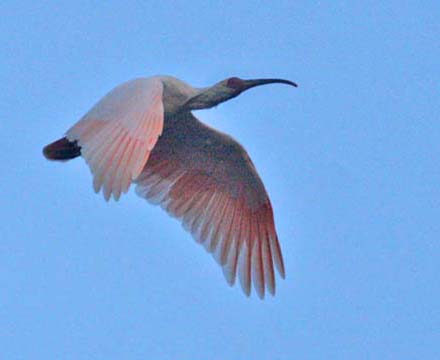 |
 |
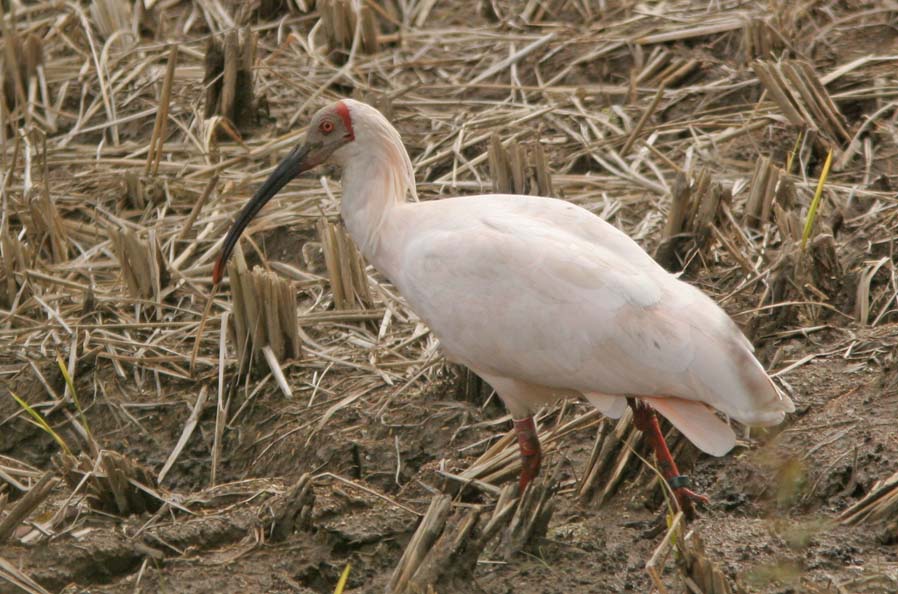
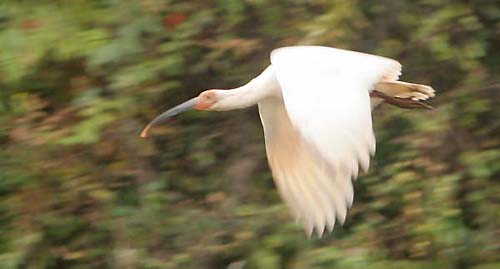 We
were quite surprised to see just how pink the adults could be,
especially when seen in flight (above). None of the literature had
prepared us for this incredible shade of color on this endangered
species. But while many were pink, a good number (younger birds?
non-breeding plumage?) were quite white (right). Also note that the
bird above is banded.
We
were quite surprised to see just how pink the adults could be,
especially when seen in flight (above). None of the literature had
prepared us for this incredible shade of color on this endangered
species. But while many were pink, a good number (younger birds?
non-breeding plumage?) were quite white (right). Also note that the
bird above is banded.
The You-shui River runs alongside Huayang, and above the village are the hills of Changqing Reserve (below left). Some of us clambering into the rocky river for attempts at photography (Jono Rossouw, below right) of stream specialists: Little Forktail and Brown Dipper (second row below), and the spectacular White-crowned Forktail (fullsize photo below).
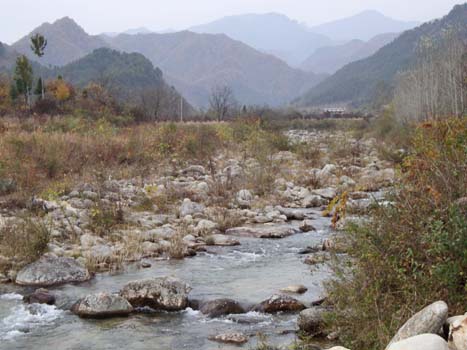 |
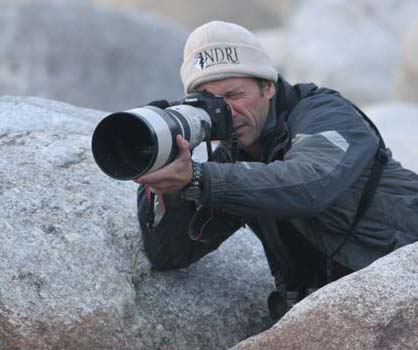 |
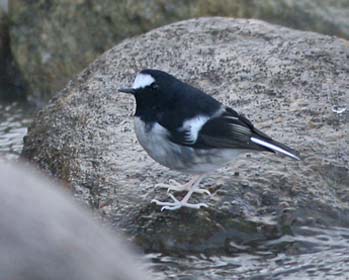 |
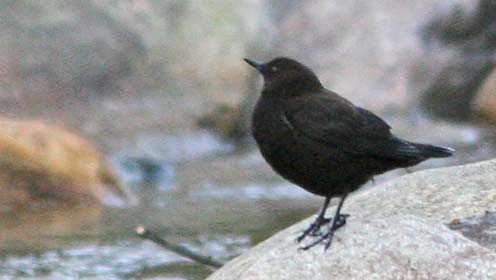 |

 During early morning walks around the village or along the river we encountered Chinese resident species, such as Brown-breasted Bulbul (right) and Black-throated Tit (just below), and a selection of migrants, including Rufous-breasted Accentor (fullsize below).
During early morning walks around the village or along the river we encountered Chinese resident species, such as Brown-breasted Bulbul (right) and Black-throated Tit (just below), and a selection of migrants, including Rufous-breasted Accentor (fullsize below).


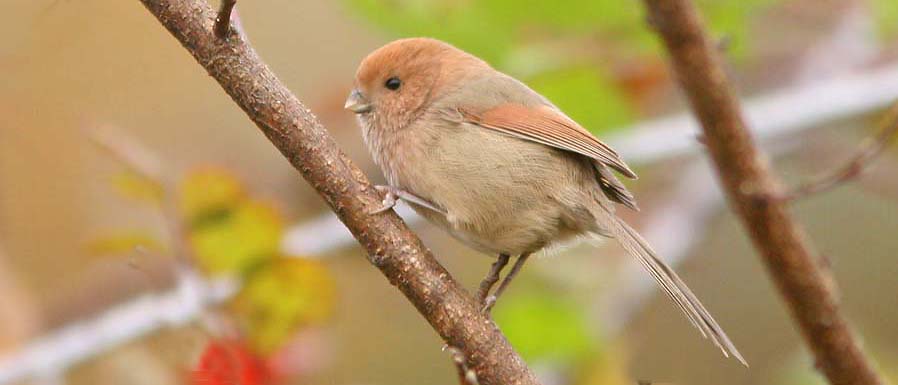
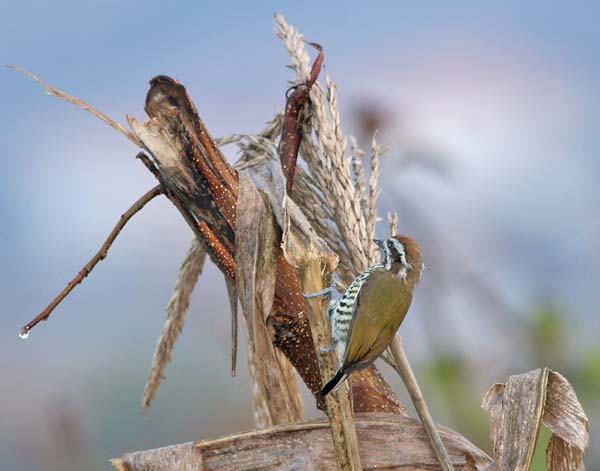 I was most pleased with my unexpected shots of Vinous-throated Parrotbill (above) and Speckled Piculet
(left). The piculet was working on a dramatic corn stalk in early
morning, with water drops still dripping from the overnight mist.
I was most pleased with my unexpected shots of Vinous-throated Parrotbill (above) and Speckled Piculet
(left). The piculet was working on a dramatic corn stalk in early
morning, with water drops still dripping from the overnight mist.
We stayed in the Changqing Reserve research center (rooms with heat and ensuite toilets, and even hot water (via a water heater) for a quick shower. Meals were taken Chinese-style in a restaurant in town. We had two days in the Changquin Reserve itself, much of it on foot looking for panda (no luck) and Golden Takin (see intro page). Birds photographed on the Reserve included Green-backed Tit and Chestnut Thrush (first row below) and a lovely berry-eating Gray-headed Bullfinch (bottom photo).
 |
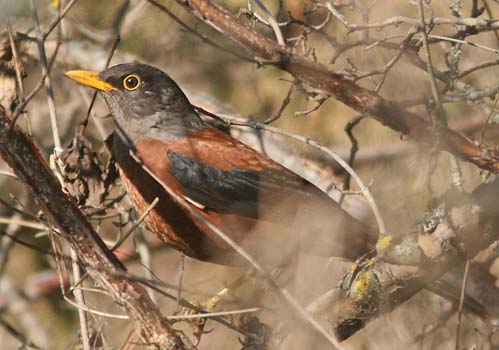 |
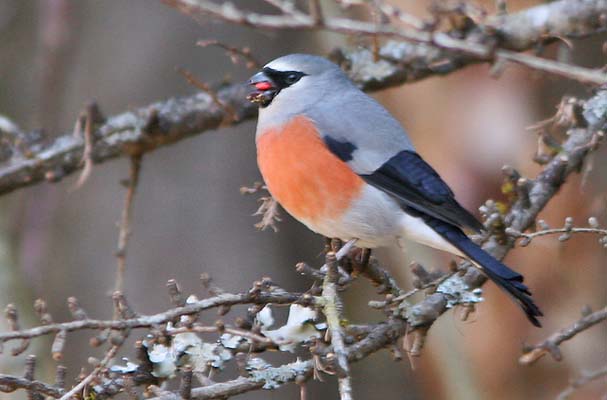
Continue to pages on . . . |
|
Return to Introduction page |
|
page created 21 Nov 2010
|
© Don Roberson 2010 |